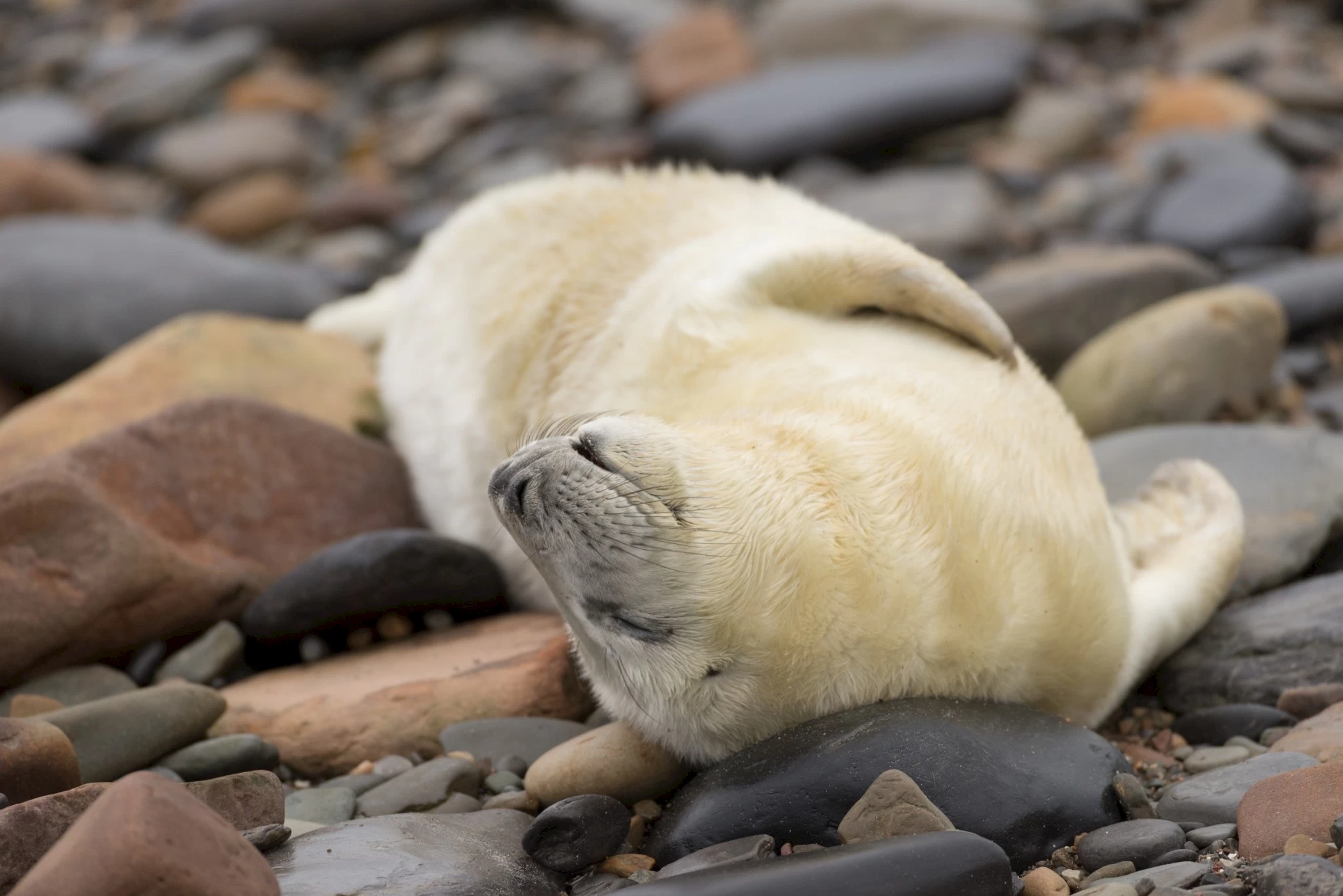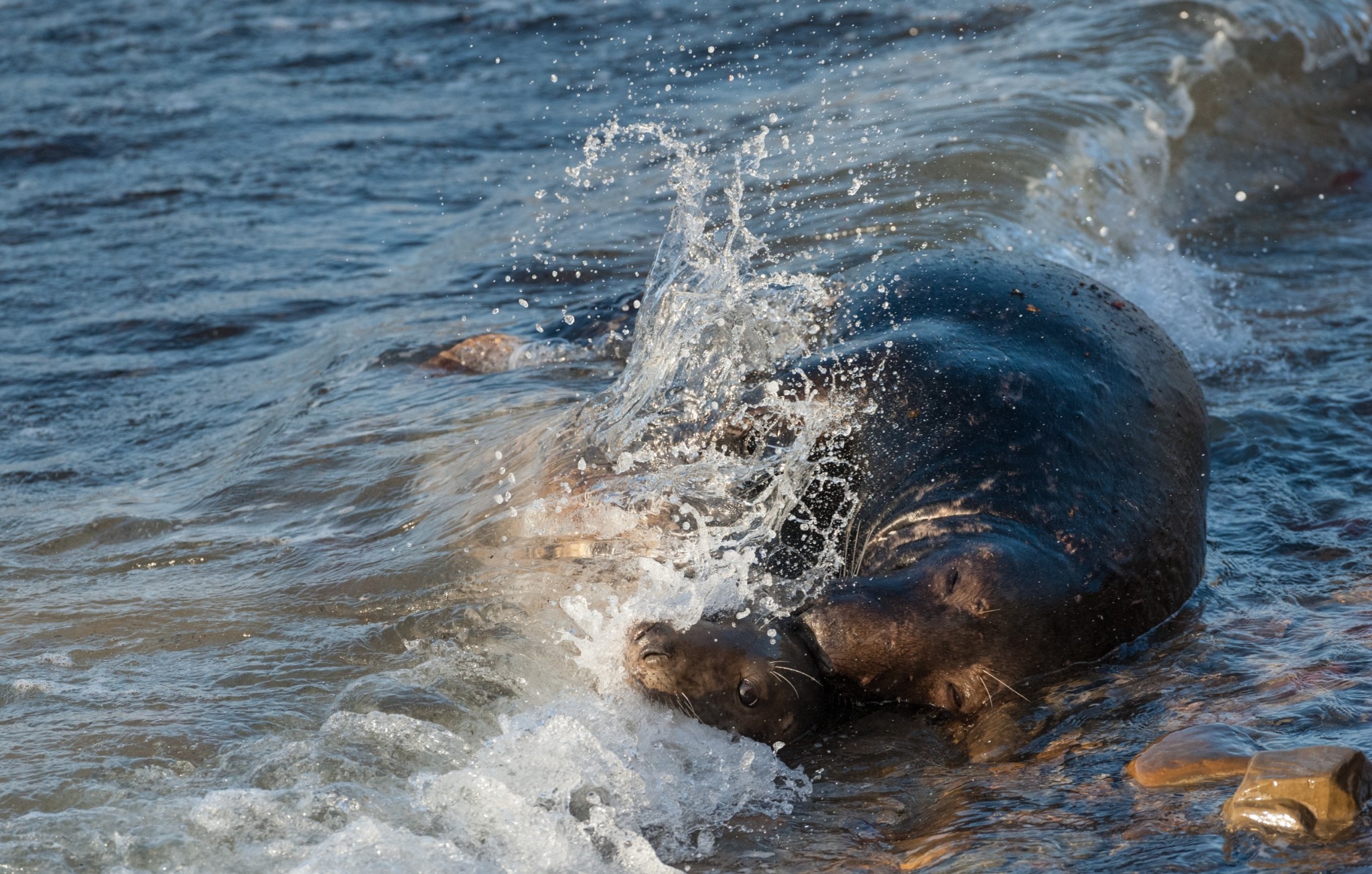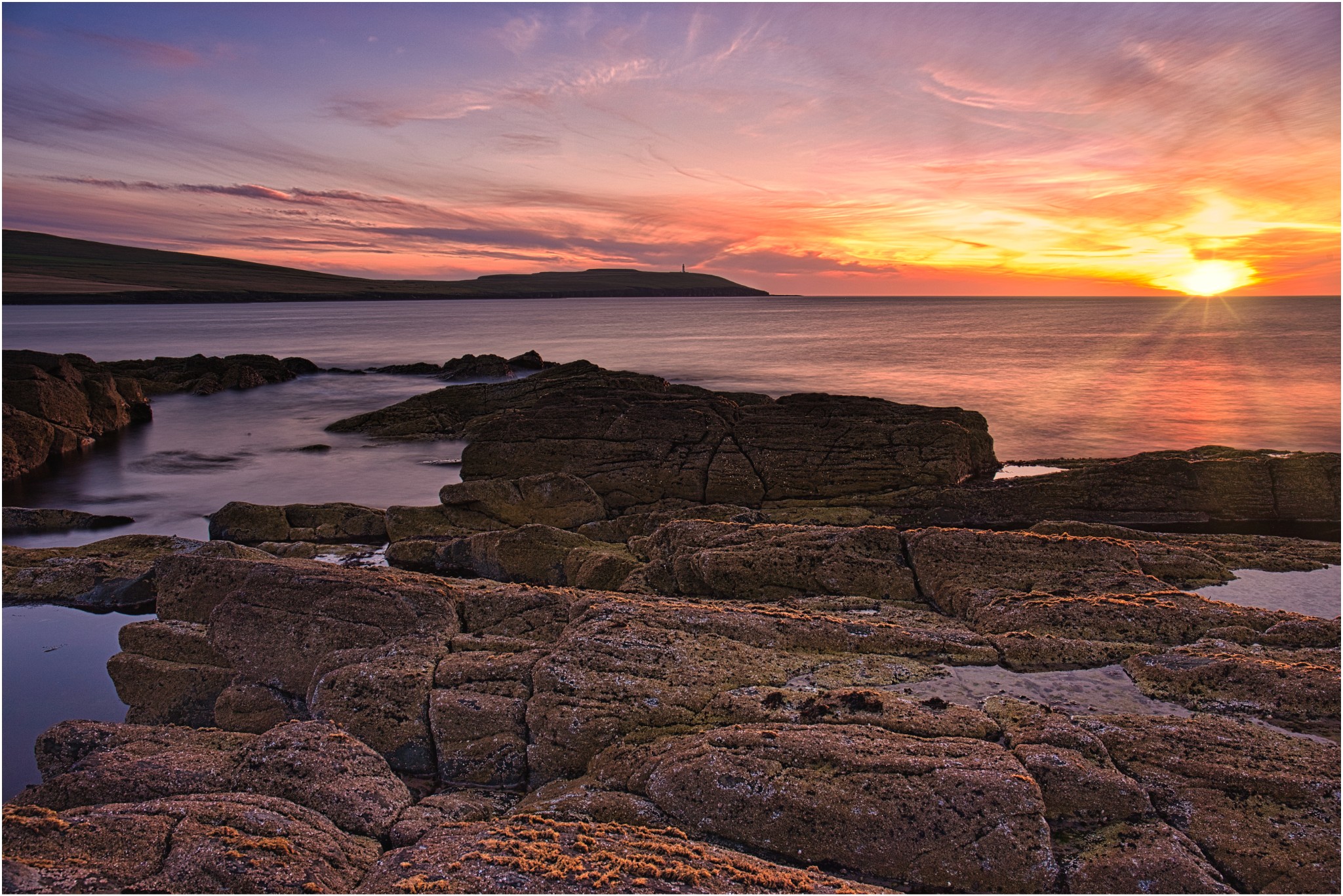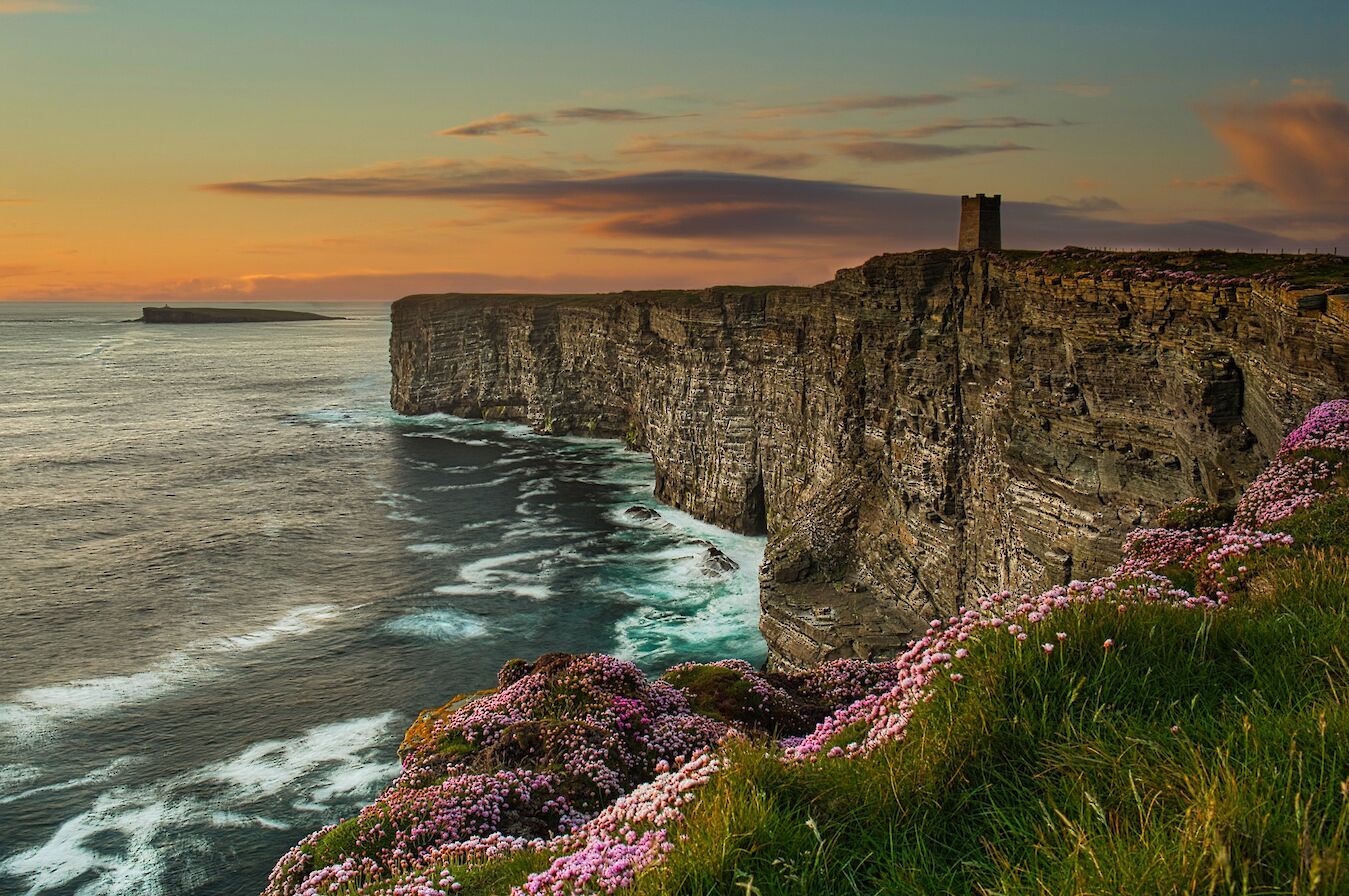Hello and welcome to the October newsletter from Orkney.com.
Autumn is here and it’s always an exciting season in the islands. With wilder weather on the way, it’s the perfect time to get out and about and experience Orkney.
If you’re planning a visit to the islands then take a look at our COVID-19 section. You’ll find all the details you need if you’re heading here in 2020.
In the meantime, keep reading for more local information, ideas and inspiration about Orkney in October.
Latest news
Experience autumn in Orkney
 Orkney is a special place to be during the autumn and winter months. Expect wild weather and bursts of sunshine, wonderful wildlife highlights and incredible history, fabulous food and drink and a warm, welcoming, talented creative community. So, how can you make the most of a visit to the islands over the coming months? We've picked out some suggestions in our latest blog. Take a look and let us know what you think!
Orkney is a special place to be during the autumn and winter months. Expect wild weather and bursts of sunshine, wonderful wildlife highlights and incredible history, fabulous food and drink and a warm, welcoming, talented creative community. So, how can you make the most of a visit to the islands over the coming months? We've picked out some suggestions in our latest blog. Take a look and let us know what you think!
Find your space in Orkney
 Thousands of historical sites, hundreds of miles of coastline and wide-open spaces as far as the eye can see. Physical distancing isn’t a problem in Orkney. If you’re visiting the islands and want to find your own space at an archaeological attraction, there are plenty of locations well worth seeking out. Take a look at our latest ‘Find your space’ blog and begin exploring.
Thousands of historical sites, hundreds of miles of coastline and wide-open spaces as far as the eye can see. Physical distancing isn’t a problem in Orkney. If you’re visiting the islands and want to find your own space at an archaeological attraction, there are plenty of locations well worth seeking out. Take a look at our latest ‘Find your space’ blog and begin exploring.
Leading a green recovery
 Orkney's renewable energy expertise has placed the islands at the forefront of a global green revolution over recent years. Now, with the impact of the Coronavirus pandemic being felt around the world, the research and innovation being carried out here over decades could help lead the way towards a greener future for our planet. A new short film has been put together to showcase Orkney’s important role in the renewable energy industry, and how it has developed in the islands over recent years.
Orkney's renewable energy expertise has placed the islands at the forefront of a global green revolution over recent years. Now, with the impact of the Coronavirus pandemic being felt around the world, the research and innovation being carried out here over decades could help lead the way towards a greener future for our planet. A new short film has been put together to showcase Orkney’s important role in the renewable energy industry, and how it has developed in the islands over recent years.
UK first for Orkney rum distillery
 A rum distillery based on an uninhabited island in Orkney is set to launch a UK first. J. Gow Rum, found on Lamb Holm on the outskirts of Scapa Flow, will add Hidden Depths Volume 1 to its range later this month. It's the distillery's first limited-edition single cask rum and the first ever three-year-old rum release in the UK. The new spirit has been fermented, distilled and aged on Lamb Holm and comes with a cask strength of 53.2%. The release will be limited to 250 bottles. Find out more from our blog.
A rum distillery based on an uninhabited island in Orkney is set to launch a UK first. J. Gow Rum, found on Lamb Holm on the outskirts of Scapa Flow, will add Hidden Depths Volume 1 to its range later this month. It's the distillery's first limited-edition single cask rum and the first ever three-year-old rum release in the UK. The new spirit has been fermented, distilled and aged on Lamb Holm and comes with a cask strength of 53.2%. The release will be limited to 250 bottles. Find out more from our blog.
Looking back at an island summer
 With autumn here, change is in the air across Orkney. We know some of you might be facing the prospect of shorter days and wilder weather with a degree of trepidation. That's why we asked Orkney wildlife filmmaker Raymond Besant to document Orkney's post-lockdown summer in a series of short films this year, showcasing the best of this special season in the islands. Sit back and soak up the sights and sounds of an island summer.
With autumn here, change is in the air across Orkney. We know some of you might be facing the prospect of shorter days and wilder weather with a degree of trepidation. That's why we asked Orkney wildlife filmmaker Raymond Besant to document Orkney's post-lockdown summer in a series of short films this year, showcasing the best of this special season in the islands. Sit back and soak up the sights and sounds of an island summer.
Join us on Instagram
 We’re still posting images from the islands on Instagram, so if you want to see more from Orkney make sure you follow us. We publish shots every week and you can join in too. Tag your own images and use #VisitOrkney and #LoveOrkney to keep in touch.
We’re still posting images from the islands on Instagram, so if you want to see more from Orkney make sure you follow us. We publish shots every week and you can join in too. Tag your own images and use #VisitOrkney and #LoveOrkney to keep in touch.
Wild Orkney
Raymond Besant hasn’t just been looking back at our Orkney summer, he’s also been taking a glance ahead at some of the wildlife highlights we can expect in autumn.
The grey seal pupping season is one of my favourite times of the year in the Orkney wildlife calendar. With a lack of large wild terrestrial animals in the islands, it’s a real treat to see these mammals hauled out on traditional pupping shores.
One of the things that makes it so special is knowing that this is a short-lived window into the life of a mammal that is very familiar to us, but one that we rarely see much behaviour from during the course of a year. We mostly just see it bobbing on the surface before slipping under the waves.
Female or cow grey seals must come ashore to give birth, usually sometime between mid-October and early November. There are exceptions of course, with some pups born in late September and into December, but things really swing into action in late October.

Rocky shores, often covered in thick cast seaweed, make favoured birthing sites though sandy beaches on uninhabited islands are also used. Depending on the site, a colony or ‘rookery’ as they are known, can range in size from anything between a handful of individuals to many thousands of animals.
Seeing an actual birth is a bit of a natural history ‘holy grail’ and in all my years of filming them I’ve only witnessed this once. At close quarters it’s possible to see the sides of the female ripple as the pup moves around inside her. But I’ve often arrived at the pupping site before dawn and can already see great black back gulls and ravens on the shore - a sure sign that there’s been a recent birth and the birds are squabbling over the afterbirth. I’m sure a large percentage of births happen during the night.
Very new pups are often more yellow in colour but after a few days the pelage turns pure white, a vestige left over from the days of giving birth during the ice age. Unlike its cousin, the harbour seal, grey seal pups can’t swim from birth. Instead they get swimming lessons in the shallows from their mum as they develop. Until then they are vulnerable to stormy seas and some do succumb to poor weather.
Once a pup is born it’s a quick turnaround to independence, rapidly gaining weight, fed on a fat rich diet of its mother’s milk over the course of three weeks. If you see the mother spinning its flipper at the pup and hitting it in the face, don’t be alarmed. Believe it or not this is motherly love and she is just encouraging it to suckle.
Space is at a premium on some shores and so disagreements between females is common. A mum coming out of the sea trying to reach her pup at the top of the shore can expect a few bites to the tail on her way there. Likewise pups that stray too far from mum can come in for rough treatment from other mothers.
The main reason for coming ashore is of course is to give birth, but this is also when they attract the attention of bull seals intent on mating. The big bull seals which can weigh 300kg are rarely seen during the summer, instead spending their time fishing in deep water.
Bull seals have what are known as ‘harems’, controlling a section of shore where they have access to females and defending it from other males. Mating often takes place in the water with much splashing and bubble making. Look out for signs of females slapping the water with her front flippers, encouraging the bull and notifying him of her readiness to mate. If she’s not yet ready he will really know about it, she will lunge and bite at him until he retreats!

Full-on fights between males competing for females aren’t as common as you might think. Males need to be evenly matched in order for a fight to ensue. They are often bloody affairs, males grilling and thrashing at each other once latched onto the neck area, but it often looks worse than it is as the neck area is especially thick so many cuts are superficial.
It’s the combination of sight, sound and smells that makes these sites so compelling. The crashing waves, the crying and wailing of the seals, the whistle of a flock of wigeon flying low overhead against the strong wind.
This is one of our best natural spectacles but also one that places some onus of responsibility on the observer. Many grey seal mothers are understandably nervous and wary at this time of the year and disturbance should be kept to a minimum. It’s not practical or advisable to try and visit the uninhabited islands with many thousands of seals. Fortunately, there is a very accessible site at the foot of South Ronaldsay where you can safely watch the drama unfold before you at close quarters.

Simply park up at Burwick and walk the short distance along the cliff top until you reach the first geo. Lie on your stomach so you’re not sticking out too much on the horizon and watch the pups suckle from their attentive mothers. They are used to people here and you’re at little risk of disturbing them whilst staying on the cliff top.
Find out more about Raymond’s work via his official website. You can also find him on Facebook, Twitter and Instagram.
His new book, 'Naturally Orkney Volume 2' is out now, focusing on Orkney's coastline and all the sights and species that can be found there. You can order your copy online.
Focus on photography
Our featured Orkney photographer of the month is Robbie Rendall, an islander with a keen eye for some of our most spectacular scenery.
I’ve had an interest in photography since the 1980s when I bought my first camera, a 35mm Pentax. My cousin, Edwin Rendall from Westray, gave me advice on what to get at the time, ordered it for me and delivered it. I still have a photo of him sitting at our kitchen table the night he delivered it reading the instructions! I took hundreds of 6x4 photos with it which I still have in albums.
I bought my first DSLR in the 90s, a Canon 550 which I used for a short while. Due to work and family commitments I then went through a period of more than 20 years when, apart from taking photos of the family growing up, I hardly used it and seemed to lose interest.
I was going a walk to Yesnaby one evening in October last year and for some reason I decided to look out my camera and take it with me. It was a beautiful sunset that evening and I had a very enjoyable time which got me back into landscape photography. During lockdown I was watching a lot of photography videos on YouTube which inspired me to try and take my photography a bit more seriously and a stage further, rather than just going out and taking quick ‘snapshots’. I then upgraded to a Canon 6D with 24-70 and 70-200 lenses. I enjoy doing long exposures so also invested in a tripod and some ND filters.
Seascapes are mostly what I am interested in and Orkney is excellent for it. There are sandy beaches, cliffs and sea stacks, and always nice waves to go along with whatever you fancy. My own personal favourite locations are Rackwick in Hoy and the area north of the Bay of Skaill. Put me anywhere along the coast with a nice sky and waves coming in and I’m happy. I’ve been exploring the East Mainland this summer and there are also some excellent locations there which would be very good, especially at sunrise. Orkney has some spectacular sunsets and sunrises, but even if they don’t happen the sky is nearly always interesting in all weathers. If you have the patience to wait it out, especially in winter, the changing light can also be spectacular.
Whether you are standing at Yesnaby in a gale of wind with a camera and tripod trying for that big epic image you always dreamed of, or are strolling along Scapa beach on a bonny summer’s evening with your mobile phone, Orkney has it all. And we are very fortunate to have it on our doorstep!
You can see more of Robbie’s photography on his Instagram page.
And finally...
Thank you for taking the time to read our latest newsletter. We hope it has brought a small slice of island life to your inbox.
We’re always keen to hear from you too - share your news, views and comments on the newsletter, Orkney.com and your Orkney experiences with us on Facebook, Twitter, Instagram or E-mail.
Remember, if you’re planning to visit Orkney soon, please check our website for the latest travel, visitor and health information.
In the meantime, it's cheerio from Orkney for now.
The Promoting Orkney project has been part financed by the Scottish Government and the European Community Orkney LEADER 2014-2020 Programme.











